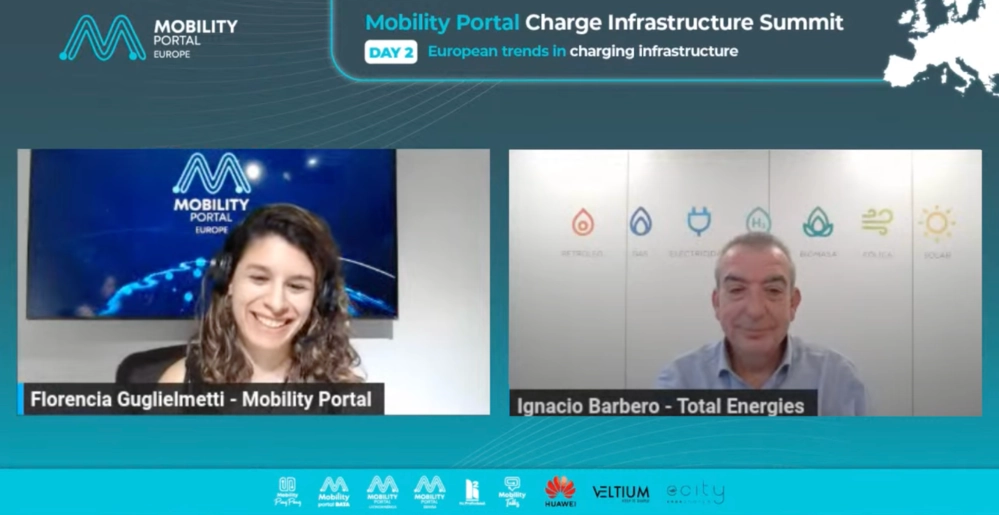With an established presence across Europe, TotalEnergies aspires to play a prominent role globally in the energy transition and achieve carbon neutrality in all its global operations by the year 2050.
Amidst this expansion, Ignacio Barbero, Director of eMobility at the company, asserts that they face distinct challenges in each country.
This is due to the varying laws, regulations, and bureaucratic structures of each state, designed to meet the objectives set by the European Union in pursuit of electromobility.
“We encounter bureaucratic challenges that involve not only the administration but also the electricity distributor, which can extend over several months,” notes Barbero.
How can this be resolved? The Director of eMobility at TotalEnergies suggests “the unification of criteria”.
However, he emphasizes the difficulty of implementing this measure due to marked differences between each country.
For instance, France is a highly centralized country with a sole electricity distributor.
In contrast, Germany and Spain are countries characterized by their complete decentralization, leading to waiting times of up to two years in some cases for the activation of charging hubs.
This variation extends to the local level, with London being an example of over 30 different administrations.
While challenges may differ in each location, the primary obstacle to infrastructure deployment across Europe lies in bureaucratic complexities.
This observation becomes evident when the company deploys its stations.
Recently, the firm has won contracts that will allow them to continue expanding its charging network across Europe with the installation of 3,000 points.
In this context, Barbero points out that deployment timelines are conditioned by the specific schedules of each city and country.
As a result, metropolises like Brussels and Paris already have all installed and operational charging points.
Meanwhile, installations in Madrid are expected to be active between February and March of next year, and in Berlin, they are projected to be operational by the end of 2024.
“Each nation presents different speeds, requirements, and focus areas for work, making each project entirely unique in relation to others,” he assures.
Barbero also highlights the need for administrations to consider secondary routes as a crucial point.
Currently, there is an uneven distribution of charging points, both nationally and between urban and rural areas.
To encourage private companies to install equipment in these places, a viable solution would be for public administrations to offer incentives.
This approach aims to ensure that 100% of the European Union’s territory can be covered.
This initiative is supported by the Alternative Fuels Infrastructure Regulation (AFIR), which sets mandatory targets for the deployment of electric charging infrastructure.
According to this regulation, from 2025 onwards, it will be necessary to install fast charging stations of at least 150 kW every 60 kilometers along the trans-European transport network (RTE-T).
Additionally, stations dedicated to heavy vehicles with a minimum power of 350 kW every 60 km on the main RTE-T network.
And every 100 km on the broader RTE-T network are expected to be installed by 2025, with the goal of achieving complete network coverage by 2030.
This strategy aims to democratize access to electric vehicles, supported by an operational charging network, to meet neutrality goals.
Despite the importance of these measures, their scope proves insufficient as they do not address secondary routes.
The issue is not limited to rural areas but also extends to service areas, where many owners are still hesitant to invest, perceiving it as unfeasible, at least in the short term.
In this regard, incentives from administrations are necessary but must be accompanied by awareness campaigns.
It is essential to address this transition to electric mobility “intelligently, by informing and educating”.

TotalEnergies aims to achieve 150.000 charging points across Europe
The French energy company has set targets for the year 2025, which include the deployment of 150,000 charging points throughout Europe.
In support of the development of eMobility in France, the company has announced a €200 million investment.
These funds will be used to equip more than 150 of its roadside service stations with high-power charging points for electric vehicles.
In line with this objective, it is anticipated that over 110 service stations will be equipped with 175 kW.
Currently, TotalEnergies collaborates with various equipment and solution providers for the installation and operation of its charging point network.
Noteworthy among them are companies such as ChargePoint, EVBox, Tritium, and Schneider Electric.








